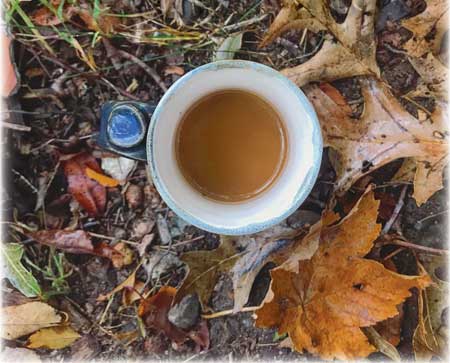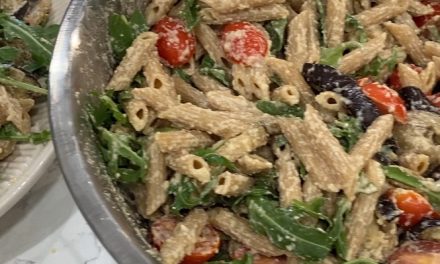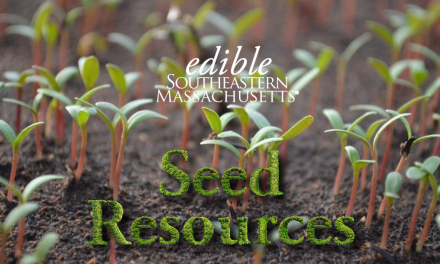By Carissa Davenport.

Photo: Carissa Wills-Demello
When I lived as a Peace Corps volunteer on the tiny island of Koro in the archipelago known as Fiji, falling in love with herbalism was an easy feat. But in Fiji, herbalism has no name. There’s no need to distinguish the practice of plant medicine from the daily acts of living. They are woven together inextricably—a single weed may serve as a dye plant in the morning, a lunch ingredient that afternoon, and a poultice for a burn that evening. Food and medicine are one. Since the time of Hippocrates, likely since humans first walked the earth, everything that we consumed was respected for its ability to heal or harm us. This modern quandary of “food or medicine,” pharmaceuticals versus herbs, is just that: a very modern one. Even the famous mummified “Iceman” of 3300 BC, discovered in the Swiss Alps in 1991, carried in his pockets several plants that likely served as medicinal, food, and tinder alike.
Our food is still our medicine. And whether we’re cooking around campfires like the Iceman or at a swanky electric stove, healing plants can still be incorporated just as easily into our daily life. And that is what autumn heralds—our communal transition from quick, fresh, and on-the-go, to slow, cozy, and domestic. You don’t have to be a Fijian villager or an old-time herbwife to integrate herbal nourishment into your daily life. While the garden (or window box!) takes time to rest, you can take to the kitchen and find ways to infuse your days with the wonderful herbs that came from your summer efforts. What would that look like? Let’s envision it! Let us use this page as a portal for our imagination, and step into a day of herbs.
The alarm goes off, and a new day has begun. Why not make dandelion root tea your first beverage of the day? Autumn is the time to harvest roots, when the plant’s energy (and thus, nutrient content) goes subterranean until the coming spring. Whether dried or fresh, a root tea is best prepared as a “decoction,” which means simmering the herb in water so that the dense cell walls weaken enough to release the concentrated flavor and nutrition. Simmer a tablespoon of chopped root in two cups of water for ten minutes. Strain and enjoy with honey, perhaps even a splash of milk, for a coffee replacement your liver and kidneys will appreciate. Like coffee, dandelion root stimulates digestion, making it a great way to start the day.
Now that your belly is rumbling, here’s another way to break your morning fast with a serving of herbal nutrition that is simply delicious—herbal syrups. An herbal syrup is a strong decoction preserved with honey or sugar, and sometimes brandy, depending on your preference. It’s a very old way to extend the life and use of herbs throughout the seasons. Elderberry syrup is a familiar classic. Elderberries are celebrated for their gentle, effective support of the immune system as well as their earthy, tart flavor. Enjoy a dose of elderberry every day, and soon enough your sniffling co-workers will be asking just what magic allowed you to escape cold season unscathed! How you enjoy your elderberry syrup is up to you, and breakfast makes that all too easy. Drizzle it over pancakes. Stir it into oatmeal or yogurt. Add it to smoothies. Just a dash instantly boosts the flavor and nutrition of any dish! And elderberry is just one well-known syrup to whet your palate with—the internet is swimming with fun, functional syrup recipes to investigate and try.
Simple Elderberry Syrup
Ingredients
- 3 cups elderberries dried, or 4 cups frozen
- 6 cups water
- 2 tablespoons dried ginger or 4 tablespoons fresh
- 1 organic cinnamon stick
- raw local honey
- brandy if desired
Instructions
- Combine berries, herbs, and water in a pot, and bring to a boil. Reduce heat and simmer for about 40 minutes. Volume will reduce by ½ to ⅓. Strain liquid using cheesecloth or muslin, squeezing juice from berries and herbs. Finally, add honey in a ratio that is about half the total volume (more honey means a longer shelf life). Add half that amount of brandy if desired, to extend shelf life. Store syrup in the fridge and enjoy a tablespoon or more daily for immune support.
Likely your next stop is work. Not too long before your ears are steaming, and your gears are turning. The brain is a mighty organ, in need of more TLC than it gets. When attention wanes or the noggin throbs, you’d likely reach for a coffee long before you’d resort to a mug of common kitchen flavorings… but why not try rosemary? Its nearly forgotten qualities of circulatory stimulation and cognitive support make it a superlative afternoon brew. Grab the nearest steeping vessel (even a simple pot and strainer will do) and that humble jar of sprigs. Combine a spoonful per cup of hot water, plus a wedge of lemon and peppermint if you have it. After a ten-minute steep, add honey to taste and enjoy hot or over ice. The effect is incredible when you consider just how underutilized rosemary is. No one will blame you for dedicating an entire garden bed to rosemary, in service of your brilliant ideas and sharp memory!
Just Chill Tincture
Instructions
- Combine equal parts of the following tinctures: lemon balm, skullcap, passionflower, and blue vervain.
- Other possible herbs to substitute could include: California poppy, lavender, oat tops, tulsi, and St. John’s wort. Including one or two of these herbs extracted in glycerin will lend a pleasant flavor to an otherwise strong-tasting combo. Shake the liquid in a closed jar to blend well, and store in a labeled dropper bottle in a dark, cool place for up to 3 years. Refer to the Summer 2022 edition of edible South Shore & South Coast or an herbal reference guide for detailed instructions on making tinctures.
Now, there are those days that even the strongest rosemary cuppa won’t make annoying deadlines vaporize. (Though folklore says it does in fact hold magical power.) If you were tuned into the summer edition of “Herbalism Through the Seasons,” those tinctures you concocted will come in handy right about now. A tincture is an herbal extract that preserves the phytochemicals present in plants for easy administration on demand. Chief among the applications for an herbal tincture is most certainly stress relief. Our mouths and tongues are supplied with a dense network of blood vessels and nerves—a direct connection to the source (and solution) of the stress response. Every person will have their favorite stress-relieving arsenal, depending on their constitution and stress level. Together they lift the spirits, release physical and mental tension, and bring ease to the mind. Leave a bottle on your desk, cup holder, purse, counter… wherever stress most often strikes. One to four squirts (which equals 1- 4 milliliters) is a standard serving to start. The more sensitive you are, the less you’ll need, to feel the calm wash over.
As the day draws to a close, hopefully, you find yourself back at home easing into an evening of relaxation. By this time of day, your body has been nourished with a medley of herbal remedies. But before you hit the hay, your skin is calling for a chance to soak in some herbal love. If you’ve yet to transform those luminescent-infused oils from the height of summer into soothing autumn salves, prepare for love at first use. Salves are what modern lotions wish they were: deep skin nourishment and protection. Real skin nutrition. Our skin soaks up plant-infused oils and golden beeswax-like food, and it shows. Apply salve to warm skin after bathing, to seal in moisture and support cell regeneration while you sleep.
Soothing Skin Salve
Ingredients
- 1 cup herb-infused oil
- 1 ounce beeswax
- ¼ tsp essential oil of choice optional
Instructions
- In a double boiler, combine beeswax and infused oil. Once melted, stir in essential oils and pour the combo into a tin or jar to cool. An easy-to-make and super healing herbal combo would be calendula, lavender, yarrow, and plantain. Together, these herbs are anti-inflammatory, antiseptic, wound healing, and itch-reducing. Apply this simple, traditional salve to the skin regularly to hydrate, soothe, and heal anything from dry patches and eczema to cuts and bites, from head to toe! *This recipe is intended for topical use only.
Once you’ve got the hang of turning to herbs for flavor and function day in and day out, the practice soon becomes habit and eventually, second nature. It’s human nature, after all, to be in relationship with our plant-cestors and green neighbors. We have whole systems in our bodies made just to receive and interpret plant compounds, for goodness’ sake! So, know this: you do not need to make the perfect salve or the tastiest tea. You can fumble on your syrup ratios or your decoction timing. But it’s all about the practice, and there’s no time like the present to reweave our ancient connection with the plant kingdom—one plant and one recipe at a time.
Please Note: When trying new herbs always consult with a physician for potential herb-drug interactions.
The content of this article is not medical advice and is meant for educational purposes only.
Please Note: When trying new herbs always consult with a physician for potential herb-drug interactions. The content of this article is not medical advice and is meant for educational purposes only.
Carissa Wills-DeMello is a lifelong lover of words and plants. So, writing about herbalism is her favorite way to spark herbal curiosity and revive traditional wisdom! Follow her herbal musings on IG @townfarmtonics.






